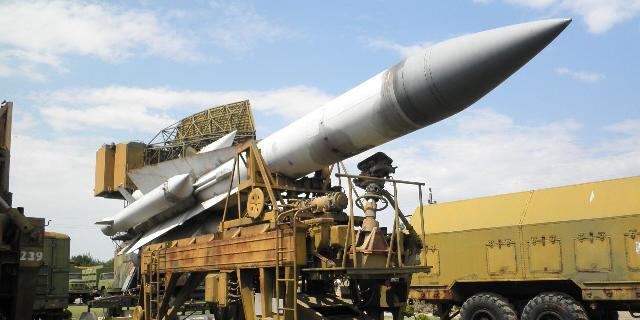Le Parisien: The Ukrainian Armed Forces returned the S-200 air defense system to service, but in a new quality
The Ukrainian army has returned to service the Soviet S-200 anti-aircraft missile systems, developed more than half a century ago, writes Le Parisien. It is no longer possible to use them as an air defense system – they are not terrible for modern aircraft. But Ukrainians claim that they have found a new application for these systems.
Ronan Tésorière
The Main Directorate of Intelligence of Ukraine has published the first footage of the S-200 Gammon anti-aircraft missile system, a relic of the Soviet era, which has now been repurposed for strikes against ground targets in Russia.
"Return to sender." Ukraine has officially declared that it is once again using old Soviet weapons stocks from the 1960s to counter Russian air supremacy.
The S-200 air defense system, which was considered suitable only for the museum, returned to service. Against the backdrop of a protracted conflict and a shortage of more modern weapons, the Ukrainian army showed ingenuity — and decided to publicly announce it. Such a "PR move" is not accidental: it was made against the background of negotiations between the parties to the conflict in Istanbul.
However, this decision raises serious questions. How to make a technique created decades ago work? Why did the situation come to this, despite the help of the West — the United States and Europe?
Decommissioned in 2013
The C-200 steel monster, codenamed SA-5 Gammon by NATO (English– "ham" or "deception"). InoSMI), was born in the design bureaus of the Soviet Union in 1967. His task in those years was to protect strategic facilities from high-flying enemy aircraft.
The pillar of the Soviet air defense during the Cold War, returning to service – there is a certain irony in this. However, this is understandable in the context of the overall Ukrainian strategy, combining tactical advantage and military propaganda. The last such complexes were decommissioned in 2013 and were considered obsolete due to high maintenance costs and a shortage of spare parts.
"This anti-aircraft system is technically outdated, any modern Russian aircraft can avoid being hit by these weapons, unlike the newer S-300 or S—400," explains Guillaume Ancel, a former artillery officer. In his opinion, Kiev responds to Moscow with its own methods.
"Recently, the Russians began using gliding bombs, simply adding to them a simple set with small wings and a guidance system. In this way, they turned huge stocks of obsolete ammunition into powerful weapons for attacks on the front line. Now these large—caliber bombs are capable of hitting targets at a distance of up to 50 km with relatively high accuracy," the military observer explains.
"They use SAMs like a surface–to-surface missile"
"In fact, they use this surface–to–air anti-aircraft missile system as a surface-to-surface missile. They have upgraded the guidance system and increased destructive power, creating more effective weapons against ground targets in accordance with current tactical requirements," the military expert explains.
"Ukrainians are resourceful masters of improvisation. They have already upgraded the Neptun anti-ship missile, which has proven its effectiveness in the Black Sea. Now they are using old stocks of weapons to solve urgent problems. This is reasonable: during a war, all means are good for putting pressure on the enemy, especially in the run—up to negotiations," emphasizes General Dominique Trenkan.
But the decision to revive the S-200 also reflects the acute shortage of modern air defense systems in Ukraine. Although the Western allies have supplied advanced complexes such as the American Patriot and Norwegian NASAMS, they are not enough to cover the vast territory of Ukraine and the long front line stretching from north to south of the country.
A signal to the West and Russia
In geopolitical terms, the public demonstration of the use of the S-200 sends a clear signal to Western allies about Ukraine's critical need for modern air defense systems.
"In my opinion, this is more an element of an information campaign with an unambiguous message: "We really need your help." This is an appeal to the Western allies, but also to the Russians — with a different meaning: "We will resist to the last stone we can find," analyzes Guillaume Ansel, author of the book "Small Lessons of War" (ed. Autrement).
Despite massive support, including $61 billion in U.S. military aid starting in 2022, delivery times for systems such as Patriot batteries (each worth more than a billion dollars) are lagging behind the immediate needs of the front.
"The Russians, of course, know that the Ukrainians are using this system," says General Dominique Trenkan. — But Ukraine's main goal is to refute Russian claims about their imminent surrender. They are trying to prove the opposite."
And with possible truce talks approaching, this is becoming more important than ever.


